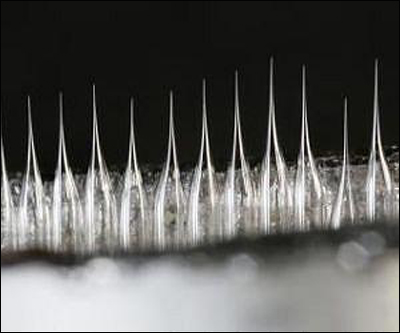Scientists from Federal polytechnical school of Lausanne created a glass nanocapillary with a diameter of an opening only some nanometers. The smallest in the world "pipette" can find application in the ultrahigh-precision press and surgery. In the latter case doctors will have an opportunity to work directly with separate cages.
The invention turned out casually: under a beam of a scanning electronic microscope quartz tubes (capillaries) were extended and turned into peculiar pipettes. It the phenomenon is familiar to everyone: if to throw a plastic bottle into fire, it starts being rumpled and get out of the shape.

The thin glass tubes, which diameter reduced by a photo from initial 200 nanometers to several nanometers. Similar channels can be useful in the press and medicine
Something similar happened and to glass tubes: the beam of a microscope caused accumulation of electrons in glass. But glass isn't the conductor therefore "chaos" of electrons caused glass heating, its compression and, finally, led to formation of a nose of a pipette.
Process of compression of glass is visible on the microscope screen in real time that allows to regulate diameter of a capillary ranging from 200 nanometers before full closing. Thus it is possible to create superthin "syringes" or microscopic test tubes.
During experiments with unexpectedly invented technology, the scientist it was succeeded to make glass capillaries with an internal diameter of 11 nanometers. Actually at the initial cost of raw materials in some cents it was succeeded to make the nanochannel worth one hundred dollars for the microfluid chip.
Unfortunately, while the method of production of glass nanocapillaries by means of a scanning electronic microscope is in fact manual. Still it is necessary to adapt technology for industrial production that will take time and will demand investments.
No comments:
Post a Comment